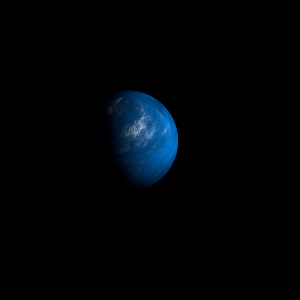| Scientific (actual) data |
|---|
| Planet | Kepler-999 b |
| Planet status | Confirmed |
| Radius | 0.209 |
| Orbital period | 5.99186 |
| Discovered | 2016 |
| Updated | 2021-02-05 |
| Tconj | 2454970 |
| Publication | Announced on a website |
| Detection type | Primary Transit |
| Alternate names | 2MASS J19583851+4611543 b, K01886.01, KIC 9549648 b, KOI-1886 b, KOI-1886.01, WISE J195838.51+461154.4 b |
| Star name | Kepler-999 |
| Right ascension | 299.66° |
| Declination | 46.2° |
| Mag j | 11.165 |
| Mag h | 10.947 |
| Mag k | 10.916 |
| Star distance | 568 |
| Star metallicity | 0.05 |
| Star mass | 1.29 |
| Star radius | 1.65 |
| Star age | 3.09 |
| Star temperature | 6237 |
| Star alternate names | 2MASS J19583851+4611543, KIC 9549648, KOI-1886, WISE J195838.51+461154.4 |
| Wikipedia article | Kepler-999 b |
Back
| |
| Fictional info (?) |
|---|
| Suggested name | Nodora |
| Planet type | Cold planet |
| The planet is named after the deity Nodora, the spirit of prosperity.
Nodora is gravitationally locked with Kepler-999 in a 5:4 spin-orbit resonance, and rotates in a way that is unique in its solar system.
It has the densest atmosphere of any cold planets, consisting of huge amounts of carbonyl sulfide.
There are ongoing investigations assessing the present habitability potential of Nodora, as well as the possibility of extant life. The volume of water ice in the south polar ice cap, if melted, would be sufficient to cover the entire planetary surface to a depth of 12 meters. |
| Atmosphere | Carbonyl sulfide | 99% |
| 2H2O | 0.41% |
| Hydrogen | 5.6E-5% |
| Methane | 0% |
| Atmospheric pressure | 24 bar |
 |
| Moon | Obetus Merion-tay | Huge irregular oceanic comet |
| Hoebeebe | Medium-sized round crater-filled asteroid |
| Lirr Steph | Very small slightly egg-shaped gaseous comet |
| Deuces | Very small potato shaped gaseous moon |
| Google search for Nodora |
|